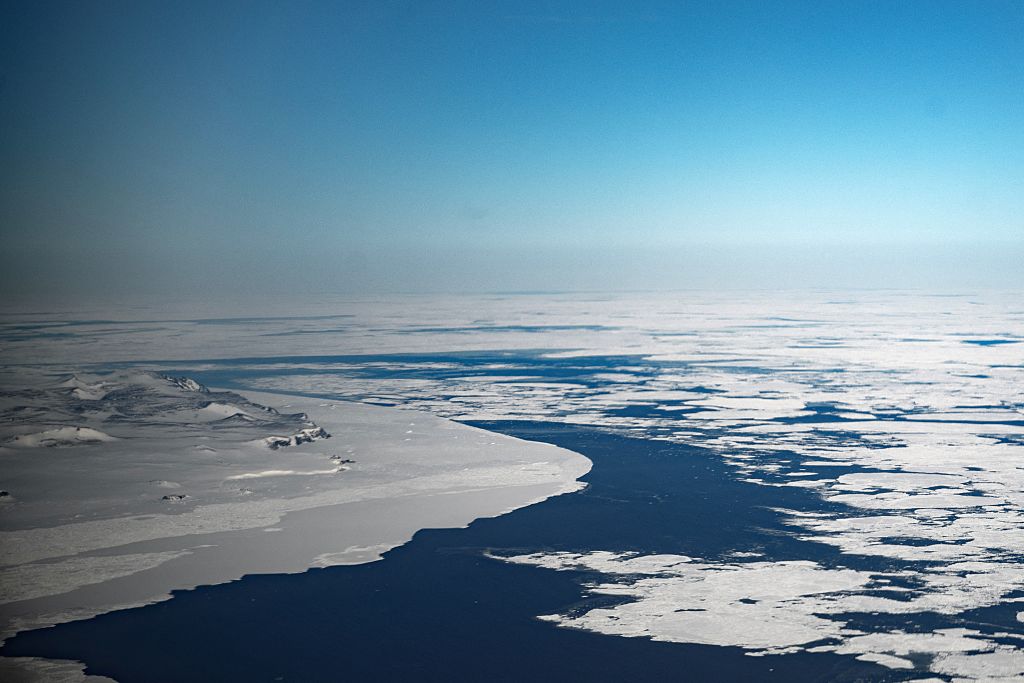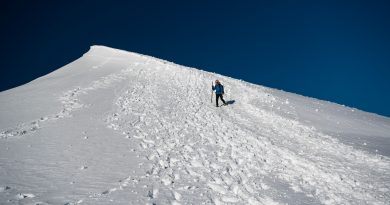Study casts doubt on massive Arctic ice shelf during ice ages

New research is challenging the ongoing debate about the Arctic’s glacial past, suggesting that the region may never have been covered by a massive, kilometer-thick ice shelf in the extreme periods of the ice ages as is sometimes previously argued.
For decades, some scientists have believed that an ice shelf once covered the Arctic Ocean and Nordic Seas during these periods, based on evidence from seafloor landforms and marine sediments.
But a study recently published in the journal Science Advances by an international research team is now challenging this theory.
“Suborbital to millennial-scale surface water bioproductivity changes provide no evidence for a continuous ice shelf in the AAG and the Nordic Seas over the past ~750,000 years,” the authors said in the paper.
“Instead, proxy data and model simulations reveal the persistent presence of seasonal sea ice cover and open water phytoplankton blooms during both glacial and interglacial times.”
New evidence challenges old theories
To the study, the researchers focused on two areas: the Nordic Seas and the Arctic-Atlantic gateway (AAG), the passage that connects the Arctic Ocean and the Atlantic Ocean.

The map also shows the area where scientists think ice might have fully covered both sites during the peak of the glaciation (outlined in white with blue flow lines).(From study “Seasonal sea ice characterized the glacial Arctic-Atlantic gateway over the past 750,000 years” in journal Science Advances)
There, they studied sediment cores and biological markers, and used advanced climate models to reconstruct the environmental conditions from hundreds of thousands of years ago.
The analyzed data then revealed that, rather than a massive stationary ice shelf during this frigid historical periods, the sea ice was far from static: sometimes present year-round in some periods and sometimes only seasonally during the glacial and interglacial periods.
Ice Shelves
- massive floating ice sheets ice attached to land
- can be hundreds of meters thick and extend far from the coastline
- can last for thousands of years
Sea Ice
- forms on the ocean’s surface
- melts seasonally
That data also suggested even during the harsh conditions of glacial events, open waters remained present, allowing for marine life to flourish in the form of phytoplankton blooms, even under ice.
“If the AAG and Nordic Seas were ever covered by an ice shelf during these times, then it must have been a partial, or at best, a very short-lived glacial phenomenon,” the paper said.
600,000-Year-Old Cold Snap: A Closer Look
One such event, occurred between 621,000 and 676,000 years ago when global temperatures plummeted.
During this period, the biological markers indicating marine life dropped significantly in their data. The researchers speculate that this could have been when ice shelves were present, but they caution that any such shelf would have been brief and limited to specific areas and that evidence for a pan-Arctic ice shelf during this time remains inconclusive.

The researchers say that evidence of ice shelves exists from around 950,000 to 790,000 years ago, during the Middle Pleistocene Transition (MPT), but that the evidence is only found in certain areas, like the AAG region.
“If a pan-Arctic ice shelf existed after this time, then it was most likely transient and regionally confined, leaving limited geomorphic or proxy signatures,” the paper said.
The researchers say the study provides new insights into how the Arctic reacts to changing temperatures, and highlight the need for more detailed future studies.
“These distinctions are important for interpreting the heterogeneity of past glacial Arctic climate and cryosphere configurations and can be further explored in future high-resolution proxy studies, combined with coupled climate ice sheet models, which have become recently available.”
Comments, tips or story ideas? Contact Eilís at eilis.quinn(at)cbc.ca
Related stories from around the North:
Canada: Arctic predicted to warm more than three times faster than global average:WMO report, CBC News
Norway: Svalbard glacier once survived a warmer climate, The Independent Barents Observer
Russia: Melting permafrost may release industrial pollutants at Arctic sites: study, Eye on the Arctic
United States: Trump’s cuts threaten US polar science after decades of data collection, Blog by Mia Bennett



